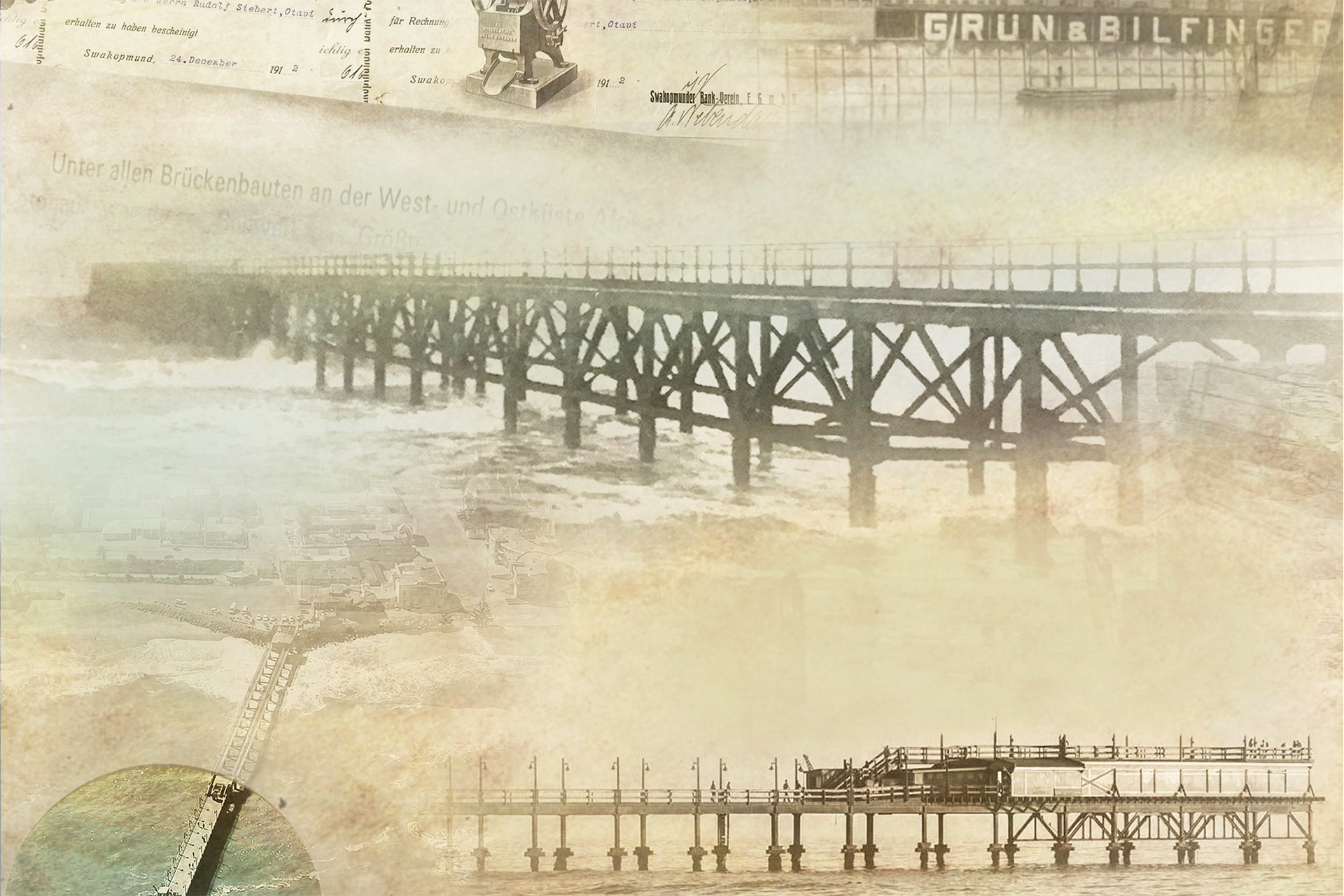06/2021
The jetty of Swakopmund
Which cultural, historical and temporal importance has the jetty of Swakopmund, which was built during the Wilhelminian Era in the protectorate of German Southwest Africa, for the building culture of today’s Namibia?
Yoko Rödel
Diploma in Architecture
E251-1 – Baugeschichte und Bauforschung
Supervisor: Andrea Rieger-Jandl
„We don’t want to put anyone in the shadow, but we also demand our place in the sun“ – this winged metaphor of the former Chancellor Bernhard von Bülow stands for the imperialist expansion efforts of the German Reich like no other. However, there are still only a few people who are aware of the fact that the Germans once had been one of the established colonial powers.
It is a reason to recall that history once again: the first official colony of the German Empire, which was founded in 1871, was the “Protectorate of German Southwest Africa”, which was proclaimed in 1884. With an area of more than 800,000 square kilometres, the colony (which is today’s Namibia) was almost one and a half times the size of the German Reich and was also the only German overseas territory in which a remarkable number of Germans settled down. For that reason, Namibia contains the largest number of German buildings from the colonial era to this day. There had been many debates about the responsibility of Germany towards Namibia in the past, but the relevance of the colonial architecture never played a significant role in that discussion.
Accordingly, the author Yoko Rödel decided to take a closer look at this topic. The result is the diploma thesis about the Jetty of Swakopmund. The research work shows the history of the former landing facility, including the development of the port in Swakopmund. Until today, the jetty impresses onlookers because if its outstanding appearance and material quality, which is why it is valued as an important monument of Namibia.
Not least because of this, Rödel founded a group named “Save the Jetty” to preserve the building for the future. There is widespread hope that the building will remain a historical feature and that its visual presence will contribute to the culture of remembrance in Namibia.
„We don’t want to put anyone in the shadow, but we also demand our place in the sun“ – this winged metaphor of the former Chancellor Bernhard von Bülow stands for the imperialist expansion efforts of the German Reich like no other. However, there are still only a few people who are aware of the fact that the Germans once had been one of the established colonial powers.
It is a reason to recall that history once again: the first official colony of the German Empire, which was founded in 1871, was the “Protectorate of German Southwest Africa”, which was proclaimed in 1884. With an area of more than 800,000 square kilometres, the colony (which is today’s Namibia) was almost one and a half times the size of the German Reich and was also the only German overseas territory in which a remarkable number of Germans settled down. For that reason, Namibia contains the largest number of German buildings from the colonial era to this day. There had been many debates about the responsibility of Germany towards Namibia in the past, but the relevance of the colonial architecture never played a significant role in that discussion.
Accordingly, the author Yoko Rödel decided to take a closer look at this topic. The result is the diploma thesis about the Jetty of Swakopmund. The research work shows the history of the former landing facility, including the development of the port in Swakopmund. Until today, the jetty impresses onlookers because if its outstanding appearance and material quality, which is why it is valued as an important monument of Namibia.
Not least because of this, Rödel founded a group named “Save the Jetty” to preserve the building for the future. There is widespread hope that the building will remain a historical feature and that its visual presence will contribute to the culture of remembrance in Namibia.
Diploma in Architecture
E251-1 – Baugeschichte und Bauforschung
Supervisor: Andrea Rieger-Jandl
